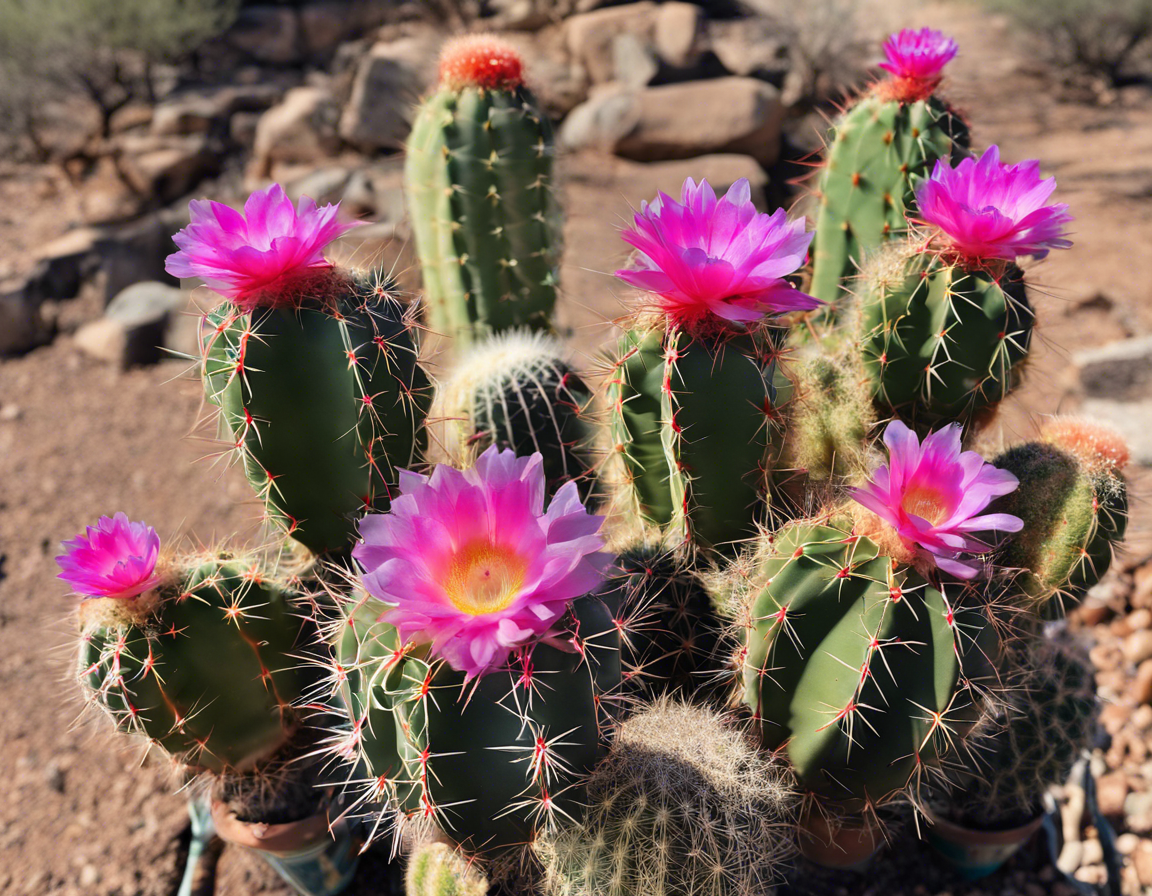Cacti are fascinating plants that have gained popularity as houseplants due to their low maintenance and unique appearance. Whether you’re a seasoned plant enthusiast or just starting your journey into the world of gardening, cacti can be a great addition to your collection. Caring for cacti is relatively easy once you understand their basic needs and requirements. This comprehensive guide will walk you through everything you need to know about thriving with cactus plants.
Understanding Cacti
Cacti are succulent plants that are adapted to survive in arid environments. They are known for their thick, fleshy stems, and their ability to store water for long periods. There are over 2000 species of cacti, ranging from tiny pebble-sized plants to towering giants. Cacti come in a variety of shapes, sizes, and colors, making them a popular choice for both indoor and outdoor gardens.
Choosing the Right Cactus
When selecting a cactus for your collection, consider factors such as size, shape, and growth habits. Some cacti are more suited for indoor environments, while others thrive outdoors in hot, sunny climates. Popular indoor cactus varieties include the prickly pear cactus, barrel cactus, and bunny ears cactus. Outdoor cacti like the saguaro cactus and golden barrel cactus require full sun and well-draining soil to thrive.
Caring for Your Cactus
Light: Cacti thrive in bright, indirect light. Place your cactus near a sunny window where it can receive at least 6 hours of sunlight per day.
Water: Water your cactus sparingly, allowing the soil to dry out completely between waterings. Overwatering is one of the most common causes of cactus death.
Soil: Use a well-draining cactus mix or create your own by mixing potting soil with sand or perlite.
Temperature: Most cacti prefer warm temperatures during the growing season and cooler temperatures in the winter.
Propagating Cacti
Cacti can be propagated easily through seeds, cuttings, or offsets. To propagate a cactus from a cutting, allow the cut end to callus over for a few days before planting it in well-draining soil. Water sparingly until roots develop.
Common Pests and Diseases
While cacti are relatively pest-resistant, they can still fall victim to common houseplant pests such as mealybugs and spider mites. To prevent infestations, inspect your cactus regularly and treat any pests promptly.
Frequently Asked Questions (FAQs)
- How often should I water my cactus?
-
Water your cactus sparingly, allowing the soil to dry out completely between waterings. In general, cacti need less water during the winter months.
-
Can I keep my cactus outside in the summer?
-
Many cacti thrive outdoors in hot, sunny climates. Just be sure to acclimate your cactus gradually to prevent sunburn.
-
Do cacti need fertilizer?
-
While cacti are not heavy feeders, you can fertilize them with a diluted cactus fertilizer during the growing season to promote healthy growth.
-
How often should I repot my cactus?
-
Repot your cactus every 2-3 years or when it outgrows its current container. Use a pot that is slightly larger than the current one.
-
Can I grow cacti from seeds?
-
Yes, you can grow cacti from seeds. Keep in mind that cacti grown from seeds may take several years to reach maturity.
-
Do cacti need direct sunlight?
-
While cacti prefer bright, indirect light, some species can tolerate direct sunlight. Monitor your cactus for signs of sunburn and adjust its light exposure accordingly.
-
How can I prevent root rot in my cactus?
- To prevent root rot, ensure your cactus is planted in well-draining soil and avoid overwatering. If you suspect root rot, remove the affected areas and repot your cactus in fresh soil.
In Conclusion
Caring for cacti can be a rewarding experience, as these unique plants are both beautiful and resilient. By providing your cactus with the right light, water, and soil conditions, you can help it thrive and grow for years to come. With a little bit of care and attention, you can enjoy the beauty of cacti in your home or garden.
